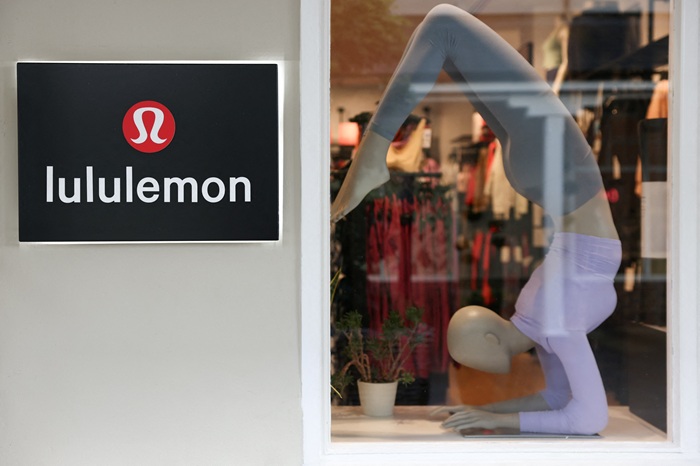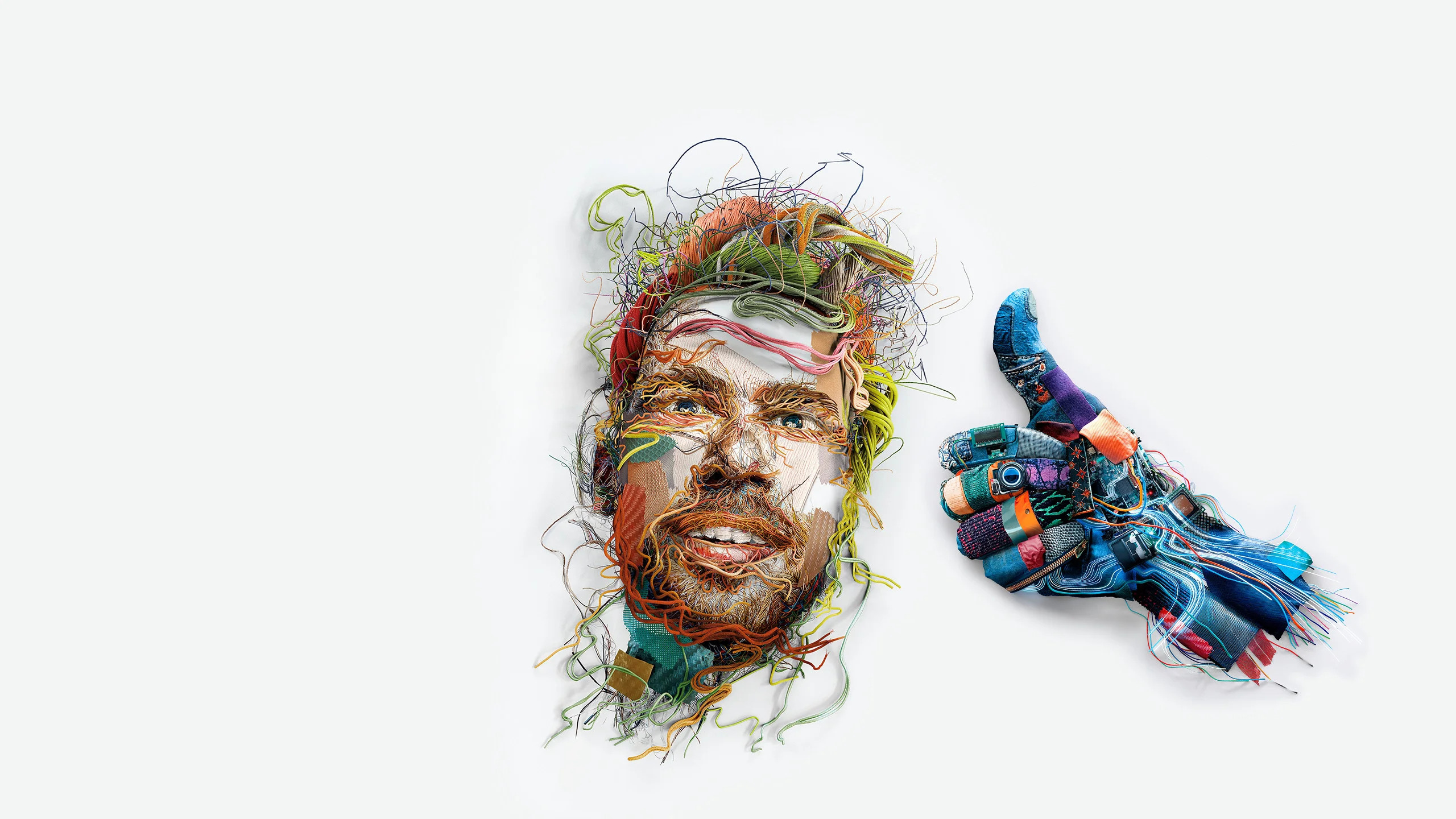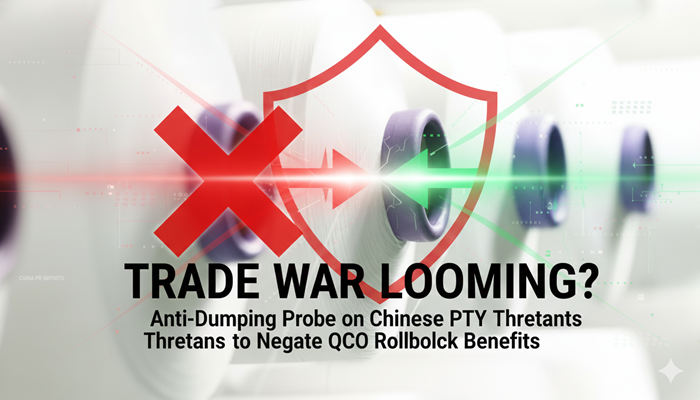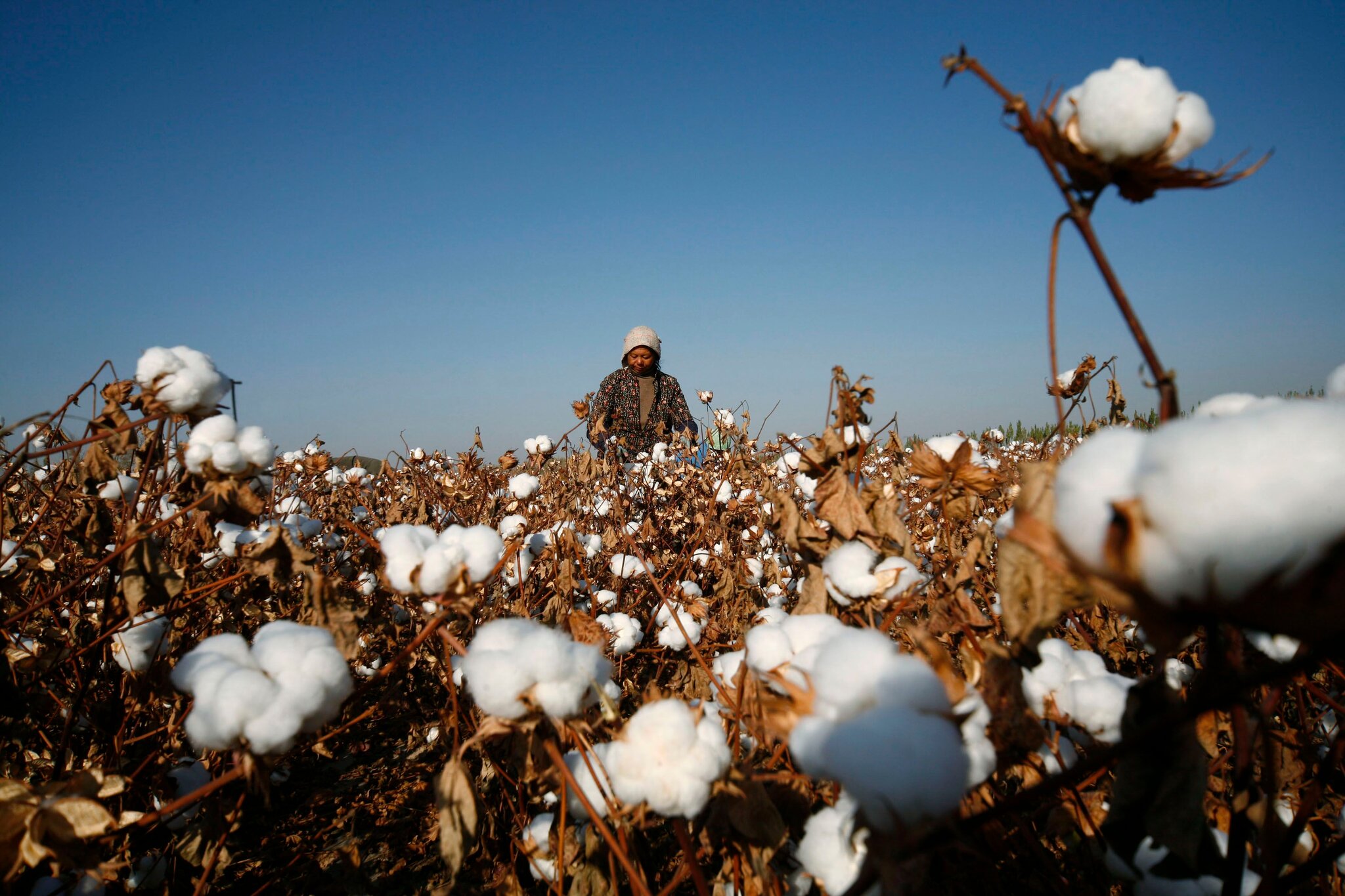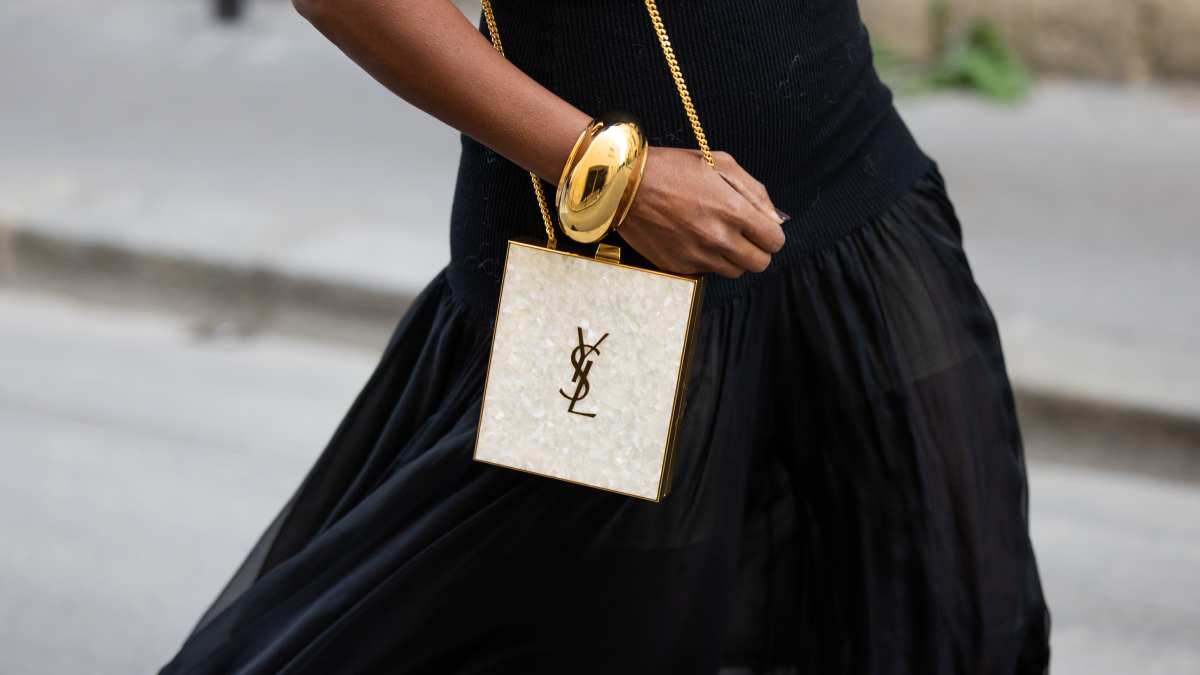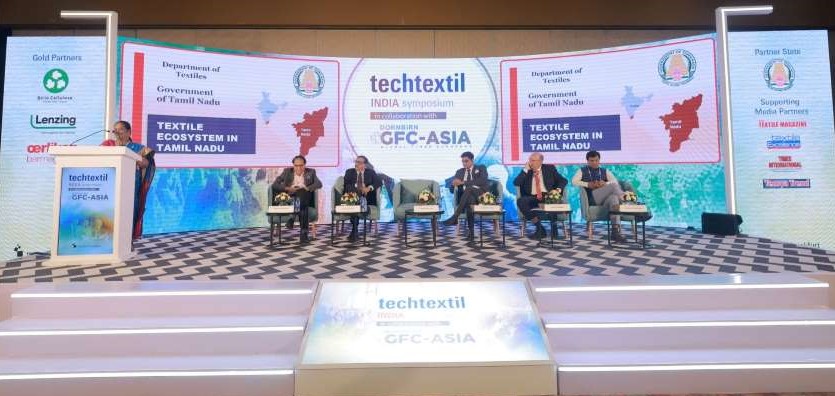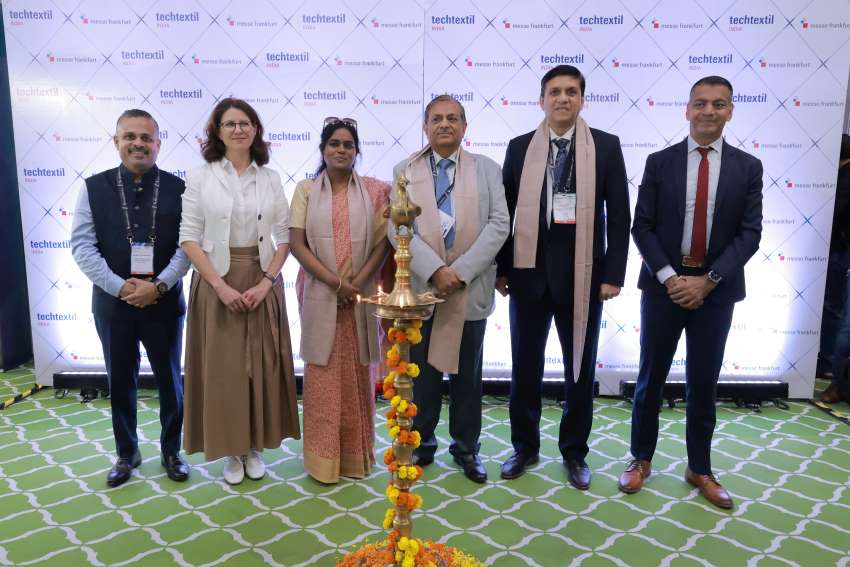FW
Panipat-based company, RG Fibers is making significant strides in India's sustainable textile sector, establishing itself as a highly trusted manufacturer of recycled yarns. Renowned for its commitment to innovation, reliability, and environmental responsibility, RG Fibers offers a comprehensive range of recycled yarn products designed to meet the evolving demands of the global textile industry.
RG Fibers specializes in producing 100 per cent recycled cotton yarn, a key material in supporting circular fashion and drastically reducing textile waste. Their Recycled Cotton Yarn is meticulously crafted from post-industrial waste, delivering exceptional strength, softness, and sustainability. This versatile yarn is ideal for a wide array of applications, including garments, home textiles, and various other textile products.
In addition, RG Fibers manufactures premium Recycled Weaving Yarn, specifically developed for fabric mills and exporters seeking high-quality, eco-friendly alternatives. This yarn ensures excellent weaving efficiency without compromising on quality or consistency, making it a reliable choice for high-volume manufacturing operations.
For the burgeoning knitwear sector, RG Fibers provides durable and flexible ecycled Knitting Yarn. This product enables the creation of sustainable fashion collections that seamlessly combine contemporary style with a reduced environmental footprint.
All of the company’s yarns are GRS certified, ensuring adherence to global standards of traceability, quality, and sustainability, states Rajiv Garg, Chairman and Founder, The Rajiv Group. The company supports businesses in their transition towards more environmentally conscious production practices.
As the global demand for recycled yarn continues to grow, RG Fibers remains dedicated to producing high-performance, eco-friendly yarns that effectively align with both commercial objectives and crucial environmental goals.
A premier international trade fair for technical textiles and nonwovens, CinteTechtextil China 2025 will attract 12 confirmed exhibiting countries and regions.
To be held at the Shanghai New International Expo Centre from September 3-5, 202, the fair will provide a dynamic platform to connect the Asian and Western markets. It will showcase a comprehensive range of products across 12 application areas.
This year, the fair will include a new category- Textile Chemicals and Dyes Zone – that will feature renowned companies like CHT Germany GmbH (Germany) and Michelman Inc (the US). It will open new business avenues for various textile applications, including sports & leisure, safety & protection, and industrial use.
Other notable exhibitors in this zone include Dupré Minerals (UK), showcasing flame-retardant vermiculite dispersions, and Chinese firms Shanghai Xinnuo Chemical (water-based emulsified waxes) and Yancheng Ruize Color Masterbatch (color and functional masterbatches).
The fair's International Hall (W5) will host prestigious European and German Zones, offering valuable expertise. Europe's technical textile and nonwovens production has largely rebounded to pre-pandemic levels, drawing leading companies to Shanghai. Returning brands like EMS-Griltech (Switzerland) and Fibre Extrusion Technology (UK) will be joined by new exhibitors such as Serel Industrie (Belgium), specializing in X-ray technology for textile recycling, and Proton Product International (UK), a manufacturer of industrial control equipment.
The German Zone will feature industry leaders like Brueckner Textile Technologies (finishing machines) and Lindauer Dornier (weaving machines for high-performance fabrics). Wetekam Group, a new participant, will highlight its technical monofilaments, reinforcing Germany's reputation for innovation.
This year, Cinte Techtextil China will also feature a dedicated focus on automotive textile solutions (Mobiltech). Exhibitors like JCT Industries (Malaysia), a PVA product manufacturer, and Jiangsu HongFeng Thread Technology (China), offering polyester and nylon sewing threads, will showcase their innovations for the automotive sector.
The fair's extensive product categories cover the entire industry spectrum, from upstream technology and raw materials to finished fabrics and chemical solutions, making it an essential business platform.
US apparel, footwear, and department store retailers are navigating a challenging landscape due to the country's tariff-heavy trade policies, says a recent report from Moody’s Ratings.
As these businesses sell through existing inventories, import duties are significantly eroding their profitability, the report adds. With limited ability to raise prices, revenue growth for the sector is projected to reach a maximum of 3 per cent.
Led by Christina Boni, Senior Vice President, Moody’s analysts have assigned a negative outlook to the sector, citing a persistently ‘difficult consumer environment.’ These retailers are ‘the most exposed to current tariffs and vulnerable to further increases, Boni highlights.
In 2025, department stores experienced monthly declines with the exception of January, shows year-on-year sales data from the US Department of Commerce, However, apparel retailers saw gains in most months. Value-oriented players like Walmart, with its significant grocery exposure, and off-price retailers are expected to outperform, according to Moody's research. In contrast, Target's operating performance is anticipated to be weak, partly due to its higher mix of discretionary general merchandise sales.
Moody’s Ratings analysts had initially projected an EBIT (Earnings Before Interest and Taxes) decline of over 10 per cent for the sector (excluding e-commerce) over the next 12 months.
However, with reciprocal tariffs pushed to August 1, this forecast has been considerably reduced to a decline of 3 per cent to 5 per cent. Despite this adjustment, revenue growth expectations remain unchanged because weak consumer demand makes it difficult for retailers to offset higher costs through price increases. Mickey Chadha, Vice President-Corporate Finance, Moody’s Ratings warns, a further worsening of tariffs would lead to a corresponding decline in EBIT expectations.
Pricing remains a significant challenge, largely because consumers were already exercising caution with discretionary spending before new import levies were implemented. Some retailers using the retail inventory accounting method are experiencing margin swings, complicating the assessment of tariff impacts.
Beyond tariffs, Moody's also points to broader macroeconomic factors pressuring retail, including elevated interest rates, which weigh on larger discretionary and housing-related purchases. Analysts anticipate, a cooling US employment market, with unemployment expected to reach 4.3 per cent by year-end and 4.5 per cent next year.
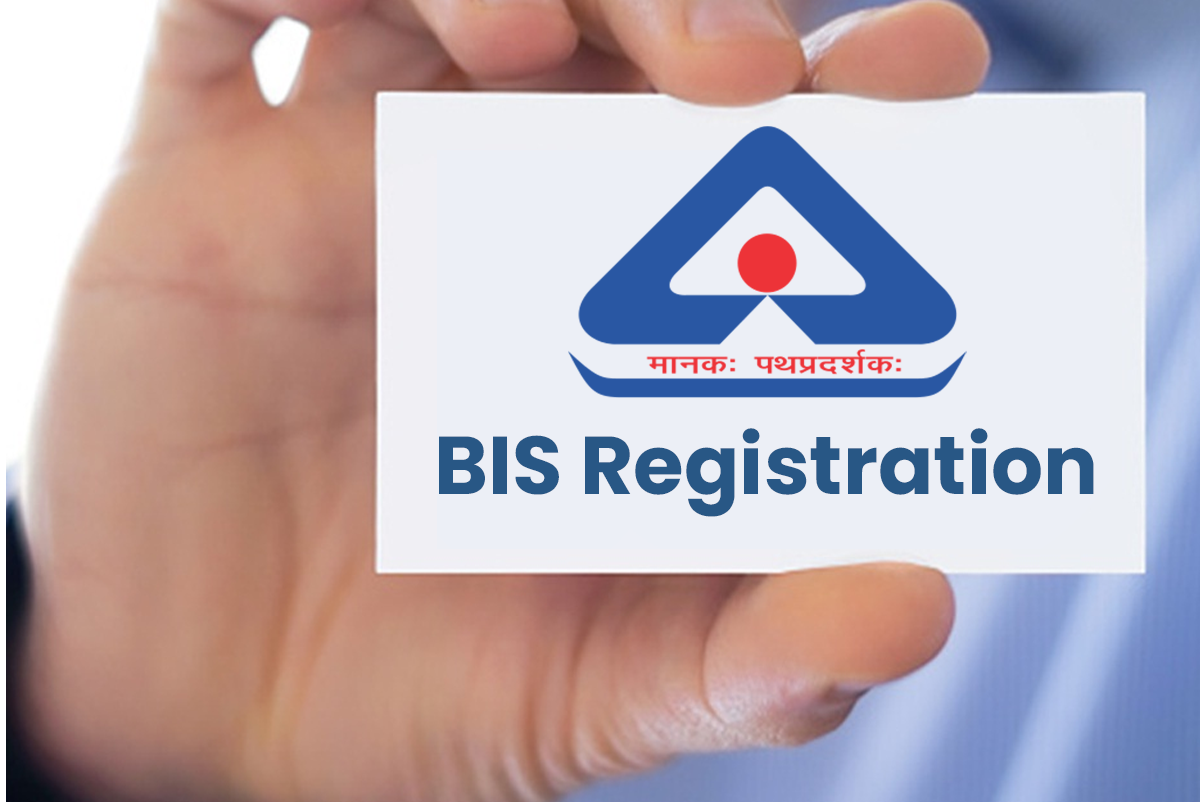
India, the world's leading cotton producer, finds itself at a critical juncture. Despite its vast output, cotton ginners are grappling with a pervasive issue: inconsistent fiber quality testing. This lack of standardization has long plagued the textile supply chain, eroding trust and hampering efficiency. However, a major shift is underway, with the Bureau of Indian Standards (BIS) ready to revolutionize the sector, offering a golden opportunity for ginners to boost their game and make ‘Made in India’ cotton the global gold standard.
The current scenario is marked by a ‘calibration chaos’. Spinning mills, the primary consumers of ginned cotton, often employ diverse methodologies for calibrating crucial testing equipment like High Volume Instruments (HVI). This leads to a disconnect in quality reports, leaving ginners in a bind and creating a ripple effect of uncertainty throughout the value chain. As the proverb goes, "You can't manage what you don't measure," and without a consistent measurement, the Indian cotton industry has struggled to present a unified front of quality.
Why BIS matters
In a much-needed reprieve for India’s cotton industry, the government has postponed the implementation of the Bureau of Indian Standards (BIS) Quality Control Order (QCO) for cotton bales to August 2026. While this delay offers breathing room to ginners struggling to meet the new mandates, it also marks a crucial opportunity—a chance to prepare for a more transparent, efficient, and globally competitive cotton ecosystem.
For decades, India’s cotton sector has grappled with quality inconsistencies, inefficiencies, and mistrust between stakeholders. The BIS standards, though stringent, aim to rectify these longstanding issues. At the heart of this regulatory shift lies the promise of standardized testing and certification—a framework that could redefine industry norms from the ginning floor to international trade negotiations.
One of the most immediate impacts of BIS compliance will be increased trust and transparency. Spinning mills, which rely on the integrity of cotton bale inputs, have often faced challenges due to wide quality variations. With a standardized certification process, mills can be confident that the cotton they receive meets specific and consistent benchmarks. This assurance is expected to reduce disputes, streamline procurement, and strengthen relationships across the supply chain.
But the benefits extend beyond trust. Accurate fiber testing at the ginning stage will drastically improve operational efficiency. By identifying quality issues early, ginners can reduce the need for re-processing or rejection down the line—a move that promises significant savings and a reduction in material waste. For an industry under pressure from rising costs, this is no small advantage.
The stakes are even higher on the global stage. In 2023-24, India’s cotton exports touched $2.8 billion. While the Ministry of Textiles acknowledges a decline in overall cotton textile exports that year, the value of raw cotton remains substantial. In a market where global buyers demand consistency, adherence to BIS standards could serve as a powerful differentiator. Reliable quality is not just a competitive edge—it’s an expectation. Meeting it could help India consolidate, and even expand, its presence in key export markets.
And most importantly, the QCO extension offers a critical incentive for technological advancement. As ginners move to align with BIS norms, many will be compelled to upgrade their equipment, adopt modern testing technologies, and implement global best practices. This transition, though challenging, has the potential to transform the sector—not just in terms of output quality, but in productivity, sustainability, and long-term resilience.
The clock is ticking toward August 2026. But instead of seeing this deadline as a hurdle, the industry now has a window of opportunity—to rebuild its foundations with quality and trust at the core. The BIS mandate may well become a defining moment for India’s cotton story—one that reshapes how the world sees Indian cotton, and how India sees its own potential.
The science of precision
The importance of precise calibration cannot be overstated. The BIS's own Handbook of Textile Testing (SP 15, Part 1: 1989) underscores that proper calibration can limit errors in fiber fineness measurements to as low as 2 per cent. Fiber fineness, along with other parameters like strength and length, directly impacts yarn quality and the final fabric's characteristics. Inconsistent HVI readings directly translate to variability in these crucial fiber properties, making it challenging for mills to predict yarn performance.
Meanwhile, the South India Textile Research Association (SITRA), a recognized Centre of Excellence for Medical Textiles and a CDSCO-approved lab, exemplifies the transformative power of standardization. Their success in a highly regulated segment like medical textiles highlights the potential for similar quality revolutions in the broader cotton industry. However, the disparity in HVI calibration across different spinning mills remains a hurdle.
Actionable insights for ginners
The August 2026 deadline for QCO implementation offers a critical opportunity for Indian ginners to prepare. Here are some actionable insights to help them navigate this transition:
Embrace BIS certification: Ginners should proactively test cotton samples at BIS-recognized laboratories like NITRA (Northern India Textile Research Association) or SITRA to benchmark their current quality. Applying for BIS certification, allowing them to use the Standard Mark and ensuring compliance with standards such as IS 1424 (Cotton Canvas) and especially IS 12171:2019 for cotton bales, is crucial. This will signify adherence to defined quality parameters including fiber length, strength, micronaire, and trash content.
Collaborate for calibration consensus: To address the ‘calibration chaos’ ginners must actively partner with their buyer mills. This collaboration should aim to align their testing protocols with BIS guidelines, thereby minimizing discrepancies in quality reports. Utilizing NABL (National Accreditation Board for Testing and Calibration Laboratories) accredited labs for all testing will further ensure consistent and reliable results.
Invest in skill development and knowledge: Staying abreast of the latest testing methodologies and quality control practices is vital. Ginners should leverage opportunities like BIS's interactive sessions (held Monday, Wednesday, Friday, 2:00–3:00 PM IST) and industry events such as the 2025 Textile Testing Workshop at G.B. Pant University to upskill their workforce and network with experts.
Champion industry-wide standards: Collaborating with industry bodies like Texprocil (Cotton Textile Export Promotion Council) and ATIRA (Ahmedabad Textile Industry's Research Association) is essential to advocate for and establish industry-wide calibration standards. These research associations have extensive expertise and NABL-approved laboratories, making them valuable partners in streamlining the supply chain and promoting a culture of quality.
Thus the move towards BIS standards is not merely a regulatory compliance exercise; it's an investment in the future of Indian cotton. By embracing standardized testing and quality control, ginners can transform their operations, enhance their reputation, and contribute significantly to India's cotton export ambitions.
Table: Cotton export data (2023-24, Provisional)
|
Category |
Value ($ mn) |
% Change from 2021-22 |
|
Cotton Textile Exports (Overall) |
12,258 |
-29% |
|
Cotton Fabrics and Made-ups |
- |
-19% |
|
Cotton Yarn Exports |
- |
-31% |
|
Raw Cotton Exports |
- |
-60% |
Note: Specific values for cotton fabrics, made-ups, yarn, and raw cotton exports for 2023-24 within the overall cotton textile exports of $12,258 million were not fully available in the provided context, only percentage changes from 2021-22.
The table, while showing a decline in overall cotton textile exports in 2023-24 compared to 2021-22, underscore the substantial economic contribution of this sector. Improving quality consistency through BIS standards is a critical step towards reversing this trend and driving future growth.
The question remains: Can India's cotton bales truly become the "gold standard" in the global market? The answer lies in the collective commitment of ginners, mills, and regulatory bodies to embrace and implement the rigorous quality control measures championed by BIS. It’s a challenge, but with the right strategic approach and a focus on precision, India's cotton industry can indeed weave a future of unparalleled quality and global recognition.
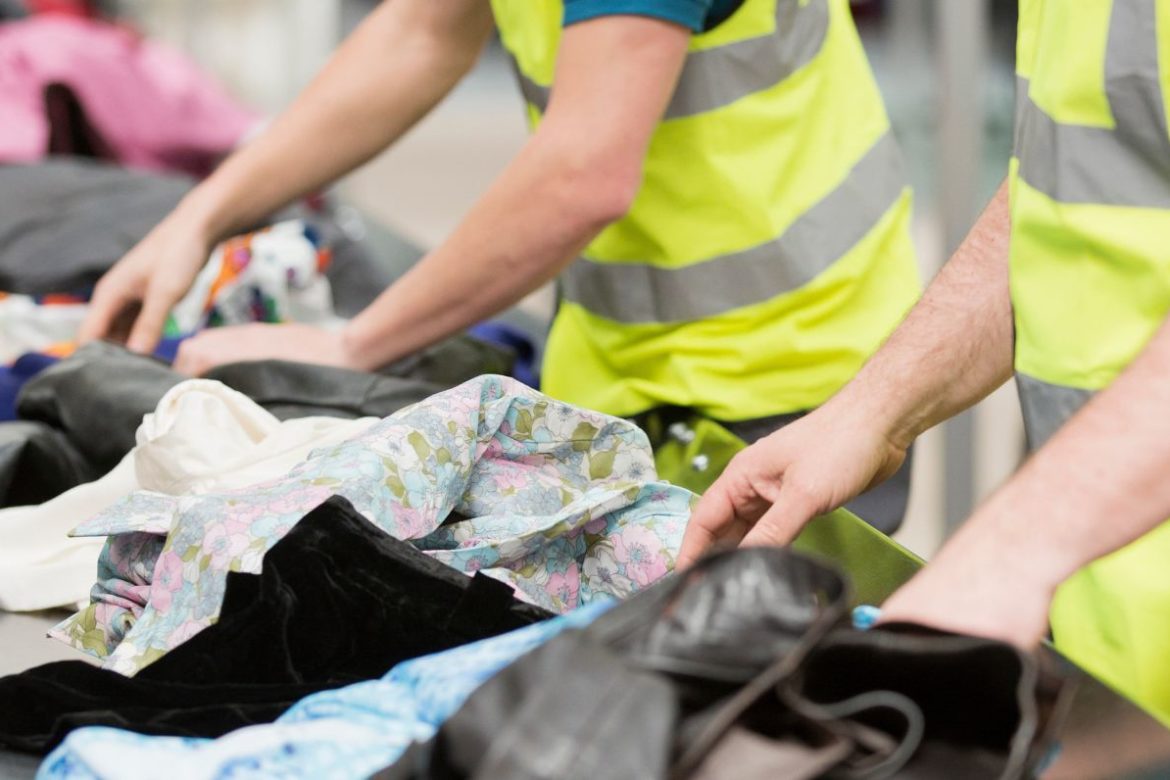
There's a quiet irony nestled in the acronym "EPR," Extended Producer Responsibility. A term that once evoked accountability and systemic transformation is now, paradoxically, in danger of becoming a rhetorical fig leaf, concealing the continued displacement of responsibility from industry to individual. Latest research from WEFT, investigating consumer tolerance for visible EPR charges on clothing in the UK, deserves attention not only for its findings but more so for what those findings quietly endorse: a consumer-funded vision of sustainability.
If a ‘producer responsibility’ framework results in consumers paying an extra $0.50 or $1.00 at checkout to fund the cleanup of the industry’s mess, then something fundamental has been inverted. Producer responsibility, once the ethical bedrock of sustainable industry reform, is being re-engineered into consumer responsibility, taxed by another name.
The great inversion, from producer to payer
The concept of Extended Producer Responsibility (EPR), first formalised in Sweden in the early 1990s, was revolutionary. It aimed to shift the financial and physical burden of waste management from municipalities and taxpayers directly to the producers of goods. The underlying principle was clear: the polluter pays, and in doing so, is incentivised to design products that are more durable, recyclable, and ultimately less impactful on the environment. It was about internalising externalities – making the true cost of production visible and accountable.
However, the WEFT report suggests a subtle but significant mutation of this principle. Around 80 per cent of the 1,762 surveyed UK shoppers supported a visible charge if its purpose was explained clearly. Transparency, after all, builds trust. But this acceptance is being dangerously misinterpreted as consent to transfer the financial burden of environmental repair from corporations to the very people buying their products.
Imagine going to a restaurant where, after ordering your meal, you’re told that you must pay a separate “kitchen hygiene fee” or a “waste disposal charge.” One might reasonably ask: Shouldn’t cleanliness and responsible waste management be the inherent responsibility of the establishment, not an à la carte ethical extra? This is precisely the absurdity we’re entertaining with the customer paying the EPR fees directly and visibly. The industry’s mess, now conveniently labelled ‘EPR,’ is being passed on as a consumer’s problem to fund.
The data dilemma, a mountain of waste
The textile industry, in particular, is a prime candidate for strong EPR. Its environmental footprint is staggering, from water consumption and chemical use in production to the colossal waste generated at end-of-life. The scale of the problem underscores why true producer responsibility is so critical:
Table: EPR, the shifting sands of responsibility
|
Metric |
Value (Approx.) |
Context/Source |
|
UK Textile Waste to Landfill |
350,000 tonnes/year |
Environmental Audit Committee, House of Commons |
|
Global Textile Waste (2030 est.) |
148 million tonnes |
World Bank / Ellen MacArthur Foundation |
|
Clothing Recycled into New Clothing |
<1% (globally) |
Ellen MacArthur Foundation |
|
Average wears per garment (fast fashion) |
~7-10 times |
Various reports, declining trend |
|
Microplastic pollution from textiles |
Significant contributor |
Numerous scientific studies |
With less than 1 per cent of materials from clothing recycled into new clothing globally, the current linear model is unsustainable. The problem demands systemic change, not simply a new revenue stream for existing industry practices.
Who really pays?
EPR schemes exist globally in various forms, but their effectiveness often hinges on how strictly the "producer pays" principle is upheld:
German Packaging EPR (Green Dot): Germany pioneered financial EPR for packaging. Producers pay a fee based on the weight and material of their packaging to a "dual system" (e.g., Green Dot) responsible for collecting, sorting, and recycling. While these costs are inevitably factored into product prices, the responsibility for funding and managing the recycling infrastructure lies firmly with the producers and their collective schemes. It incentivizes them to reduce packaging or choose recyclable materials to lower their fees. The consumer doesn't see a separate line item, but the system is robust.
Proposed EU textile EPR: The European Union is moving towards mandatory EPR for textiles by 2025. The aim is to make producers financially responsible for the collection, sorting, and recycling of textile waste. The critical question, however, remains: how much of this cost will truly be absorbed by producers through design changes and efficiency, and how much will be passed directly or indirectly to consumers? The UK's WEFT report reflects this ongoing tension – a proactive move to gauge consumer willingness to bear a visible cost, potentially before the full implications of producer obligations are felt.
The concern arises when the EPR charge, instead of driving fundamental shifts in production, becomes a mere pass-through mechanism. If my £1 EPR charge is being used to fund a system that transforms cotton garments—known for their versatility, biodegradability, and renewability—into chemically intensive and industrially dependent alternatives like recycled viscose or lyocell, then as a consumer I would rather keep that £1. Or better yet, choose where it goes. This isn't about fostering true circularity; it's about funding the industry's preferred (and often most profitable) recycling routes, even if they aren't the most environmentally sound or aligned with consumer values.
A sustainability tax, not EPR
Currently, sustainability is being repackaged as something consumers must purchase rather than something producers must embed. The EPR charge becomes yet another toll booth on the ethical shopping highway, inviting consumers to feel virtuous while corporations continue to externalize the true costs of doing business. This dilutes the very essence of producer responsibility, shifting the onus of environmental repair from the creators of the mess to the end-users.
If the industry wants to pass a fee onto the consumer, that is fine. But do not dress it up as EPR. Call it what it is: a sustainability tax. And if that is the path we choose, we should at least ensure it is spent on the most critical, community-driven, and systemic interventions. This includes investing in local repair economies, supporting genuine closed-loop material innovation, fostering better collection infrastructure that prioritizes reuse, and crucially, incentivising producers to design products that last longer and are easier to recycle mechanically.
In the end, the test of any EPR scheme is simple: who bears the cost, and who reaps the benefits? If we cannot answer this clearly and justly, then perhaps it’s time to return to first principles. Let us remember that producer responsibility must begin and end with the producers. Only then can EPR truly live up to its name and deliver the systemic transformation our planet desperately needs, rather than becoming another burden on the unwitting consumer.
The 57th edition of Ukrainian Fashion Week (UFW) is set to be held in Kyiv from September 4- 8, 2025. This marks the third UFW event since Russia's full-scale invasion began in 2022.
For 28 years, UFW has been Ukraine's leading fashion platform and a vital cultural institution, shaping the country's fashion industry. The event continues to champion designers, inspire the creative sector, and share Ukraine's narrative globally despite current global uncertainties.
Ukrainian designers are reinterpreting their national heritage, showcasing a nation that continues to create, innovate, and affirm its cultural identity even amidst conflict. Their creations reflect the emotions of a nation that has been fighting for over three years in a full-scale war to defend its identity and existence, notes Iryna Danylevska, Founder and CEO, Ukrainian Fashion Week Through the universal language of fashion, they convey the values, spirit, and strength of the Ukrainian nation, she adds.
UFW made its physical return to Kyiv in September 2024, the first time since the full-scale invasion. This return came shortly after air raid sirens were lifted in the capital following a night of Russian strikes. The ongoing war has profoundly influenced the atmosphere of the fashion shows since 2022. Each runway show now begins with a moment of silence to honor those who have died, observed by designers, journalists, and guests. Shows also only commence after an announcement about the nearest bomb shelters in case of an airstrike.
The second Kyiv edition since the full-scale war, held from February 14–17, 2025, notably highlighted 'adaptive clothing' designed for veterans facing mobility challenges.
A leader in cutting-edge technology integration, Fotol AI has launched an AI virtual try-on technology- @ai-clothes-changer- poised to revolutionize online fashion retail.
Fotol AI’s virtual try-on technology streamlines the traditional launching process of new clothes. In this, Merchants need to simply upload product images (flat or hanging) and a model photo, and the AI generates flawlessly fitted, realistic ‘model-wearing’ images in under a minute. This drastically cuts expenses for models, photography, and retouching, reducing production time from days or weeks to instant results. The ability to generate high-quality product images at unprecedented speed allows businesses to launch new products faster, capitalize on trends, and boost operational efficiency.
Recognizing the power of video content, Fotol AI allows businesses to leverage the platform’s powerful AI video generation technology to effortlessly transform virtual try-on images into captivating product showcase videos. This brings products to life, significantly enhancing visual impact, capturing potential buyers' attention, and boosting purchase intent, ultimately driving higher conversion rates.
One of the biggest pain points in online clothing shopping is the inability to try items on, leading to uncertainty about fit and style and often resulting in returns. Fotol AI’s virtual try-on technology offers a game-changing solution for consumers. Shoppers need to simply upload a clear full-body photo and the desired clothing image. Using advanced AI algorithms, the system generates a lifelike image of the garment ‘worn’ on the shopper in under a minute. This allows users to clearly see how the clothing fits, drapes, and complements their personal style, providing a ‘what you see is what you get’ experience that reduces purchase uncertainty and minimizes returns caused by ‘imagination bias,’ enhancing overall shopping satisfaction.
Fotol AI aims to lower barriers to AI adoption by integrating world-leading AI capabilities into an All-in-One AI application platform. A single Fotol AI account provides access to a growing suite of cutting-edge AI applications, including AI image generation & editing, AI video creation, AI copywriting, and AI design. By continuously tracking and integrating the latest AI breakthroughs, Fotol AI ensures its users remain at the forefront of technology, making it an ideal partner for businesses seeking efficiency and individuals looking for convenience.
Fashion retail sales in North America experienced a slight slowdown in June 2025, though the sector still concluded the first half of the year with overall positive growth. Data released by the US Bureau of Commerce, shows, fashion retail turnover in the region increased by 2.4 per cent to reach $24.86 billion in June as compared to June 2024.
Despite this year-over-year rise, fashion retail sales in declined by 11 per cent M-o-M from $27.945 billion in May 2025.
However, a strong performance earlier in the year has ensured that the cumulative figure for the first half of 2025 remains positive. US retail fashion sales for the first six months increased by 3.6 per cent to $142.604 billion, compared to the same period last year.
This sector's performance outpaced the first six months of the year, coinciding with President Donald Trump's initial months in office. The report notes, full effect of his first tariff announcement in April on inflation and sales may not yet be entirely visible.
In contrast to fashion, overall consumption declined by 5.2 per cent in in June 2025 compared to June 2024, a significant reversal from the 3.1 per cent rise observed in May. Total US retail trade turnover stood at $713.652 billion during the month, reaching a cumulative $4.2 trillion for the first half of the year.
Poised for substantial expansion, the global recycled cotton market is projected to nearly double from $5.02 billion in 2023 to $9.95 billion by 2033, demonstrating a robust CAGR of 7.08 per cent over the forecast period. This optimistic outlook comes from a recent research report by Spherical Insights & Consulting, highlighting the growing emphasis on sustainable practices within the textile industry.
The recycled cotton market revolves around transforming used or discarded cotton textiles into new, usable fibers. This eco-friendly approach not only reduces the environmental footprint of conventional cotton production but also decreases the demand for virgin cotton and diverts textile waste from landfills.
Several factors are fueling this market's momentum. Stricter environmental regulations and policies globally are pushing for minimized textile waste and increased recycling. Governments are actively promoting the use of recycled materials through various initiatives and incentives. Furthermore, rising consumer awareness about environmental issues is a significant driver. As individuals increasingly seek sustainable products, brands and manufacturers are integrating recycled cotton into their offerings, especially within the fashion industry. Major fashion brands and retailers are embracing recycled cotton to meet the surging demand for eco-friendly clothing and accessories.
In 2023, the recycled cotton yarn segment held the largest market share and is expected to maintain significant growth. Recycled cotton yarn is widely utilized in fashion and home textiles for knitting and weaving, valued for its quality and sustainability.
By application, the apparel segment dominated the market in 2023 and is anticipated to continue its strong growth. Recycled cotton is extensively used for a variety of clothing items, driven by increasing consumer preference for eco-friendly apparel.
Asia Pacific is projected to hold the largest share of the global recycled cotton market throughout the forecast period. This region is a major hub for textile manufacturing, with countries like Bangladesh, India, and China emphasizing sustainability, thereby boosting the demand for recycled cotton.
North America is expected to experience the fastest CAGR growth in the recycled cotton market. This growth is attributed to strong consumer awareness and supportive regulations that encourage the use of sustainable materials. Prominent fashion brands in the US and Canada are actively launching sustainable collections, setting a precedent for recycled cotton adoption.
Continuing with its international expansion, Lululemon has forayed into the Italy market with the launch of its first store at Vittorio Emanuele in Milan.
Spanning approximately 5,700 sq ft across two floors, this new store offers a thoughtfully designed environment for shoppers. It features distinct areas dedicated to Lululemon's signature technical innovations, showcasing both men's and women's collections. All products at the store are designed with a focus on high-performance and high-style, suitable for a wide range of activities including yoga, running, training, tennis, and golf.
Paying tribute to Italy's rich design heritage, the store's architectural concept blends traditional craftsmanship with modern materials. A standout feature of this store is the Lululemon Glide sculptural façade - a striking, custom 3-D printed installation. This design is inspired by Lululemon's iconic Define Jacket pattern, with flowing geometry that appears to expand and move across the storefront, mimicking fabric on an architectural scale.
In line with Lululemon's omni-channel strategy, the Milan store aims to provide a fully integrated shopping experience. Customers will have seamless access to the brand's complete product range through the Endless Aisle BBR (Back Back Room) solution, ensuring product availability beyond what's physically in stock. International visitors can also benefit from Global Blue Tax-Free Shopping, enhancing their experience in one of Europe's top tourist destinations.
The Milan store opening is a significant step in Lululemon’s international expansion, building on its presence in key markets like the UK, Ireland, Germany, France, Spain, the Netherlands, Norway, Sweden, and Switzerland. Entering Italy is part of Lululemon’s broader ‘Power of Three ×2’ growth plan, which aims to quadruple international revenue from 2021 levels by the end of 2026.


